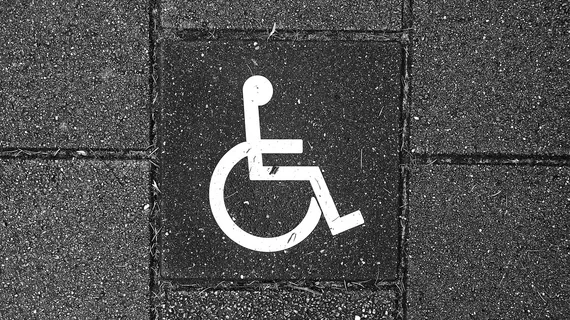DOJ finalizes rule aimed at improving disabled patients’ access to radiology services
The federal government recently finalized a rule aimed at improving disabled patients’ access to imaging and other diagnostic services.
On Aug. 9, the Department of Justice published the final policy, updating medical diagnostic equipment requirements under the Americans with Disabilities Act. The rule—which applies to public hospitals and university health systems—adopts a 17- to 19-inch minimum transfer height for equipment used in the supine, prone side-lying and seated position, the U.S. Access Board noted Aug. 13.
However, the DOJ has indicated a willingness to consider future rulemaking after the board adopted its final rule in July, setting a transfer height of 17 inches.
U.S. Rep. Ayanna Pressley, D-Mass., praised the rule Aug. 14. She and a group of 11 lawmakers wrote a letter in April, urging the administration to strengthen and finalize the rule.
“Disability rights are human rights, and every policy is a disability policy issue,” Pressley said in a statement. “Improving access to medical diagnostic equipment for the disability community is a long-overdue step that will help our disabled siblings get the high-quality care they demand and deserve.”
The American College of Radiology recently shared an update about the rule, noting that it makes enforceable previously established standards from the U.S. Access Board. Along with medical imaging equipment, the changes apply to weight scales, exam tables and dental chairs. The Department of Justice will require that at least 10% of a providers’ Medical Diagnostic Equipment units of each type meet Access Board standards.
“Importantly, DOJ’s rule does not obligate changes that would be a fundamental alteration or cause undue financial and administrative burdens,” the college reported Aug. 13. “It likewise did not implement the Access Board’s 2024 reductions to low transfer heights in the MDE standards, as these revisions were still in process during the DOJ rulemaking.
ACR, AdvaMed and the Medical Imaging & Technological Alliance previously expressed reservations about the rule.
“As an organization with a longstanding commitment to quality and safety in medical imaging, and as vigorous advocates of access to imaging services, we recognize the importance of ensuring appropriate access to diagnostic equipment for all patients,” ACR Chair Jacqueline A. Bello, MD, wrote in July 2023. “We are concerned, however, that the proposed standard represents a ‘one size fits all’ approach to diagnostic equipment table height that does not reflect the diversity in design and purpose, engineering complexities or clinical practices applicable to diagnostic imaging equipment.”
“The financial and operational impact of the proposed rule on small hospitals could be profound,” Zack Hornberger, AdvaMed’s senior director, digital health and imaging technology, wrote in February. “Many small hospitals operate on tight budgets and may not have the resources to upgrade or replace existing diagnostic imaging equipment to meet new accessibility standards. This could lead to reduced availability of essential diagnostic services for patients in rural and underserved areas, contrary to the rule's intent to increase accessibility.”
The three organizations had not issued updated commentary on the final rule as of Monday. According to the version published in the Federal Register, the rule is slated to go into effect Oct. 8. ACR encouraged relevant radiology stakeholders to work closely with qualified legal/compliance teams to review the regulation and guidance published by the administration. DOJ typically enforces the Americans with Disabilities Act through lawsuits and settlement agreements.
For further information, you can read the final rule and a corresponding DOJ fact sheet.
“People with disabilities continue to face barriers to getting medical care because of inaccessible [Medical Diagnostic Equipment],” the Justice Department reported in the latter. “Barriers can include exam tables with heights that cannot be adjusted, mammography machines that require a person to stand, or weight scales that do not accommodate wheelchairs. These barriers result in inequities and exclusion from basic health services for individuals with disabilities, contributing to poor health outcomes. This rule establishes enforceable standards for accessible MDE, which is a significant step toward addressing health disparities experienced by people with disabilities.”

